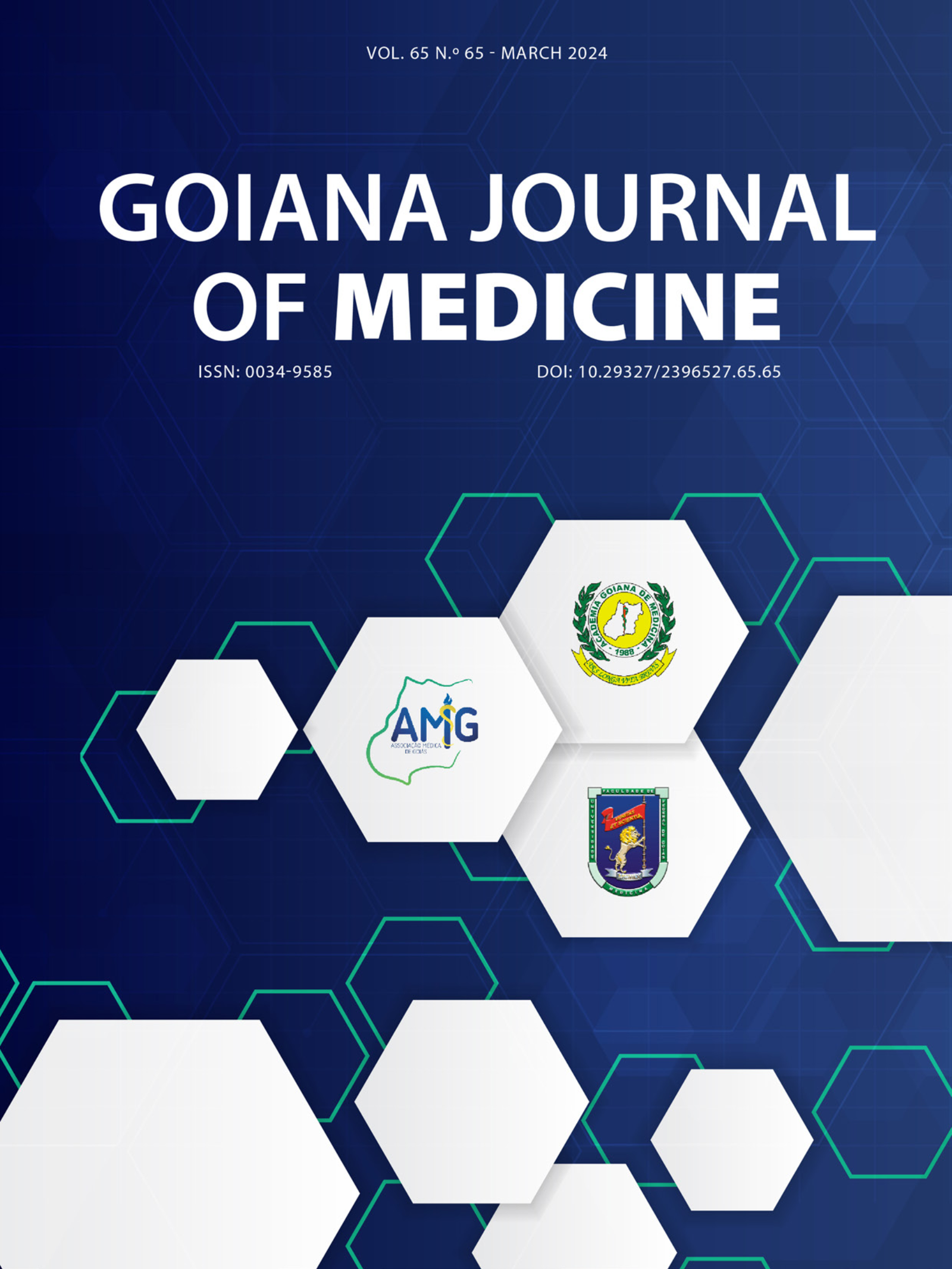Postpartum hemorrhage at the maternity unit of the Hospital das Clínicas de Goiânia
DOI:
https://doi.org/10.29327/2396527.65.65-2Keywords:
Postpartum Hemorrhage, Prevalence, Hemorrhage, Delivery, Labor ComplicationsAbstract
INTRODUCTION: Postpartum hemorrhage (PPH) is a serious complication that can occur after childbirth and is characterized by excessive blood loss. It is, in fact, the leading cause of maternal mortality worldwide. Studies show that the prevalence of postpartum hemorrhage worldwide is approximately 10%, ranging from 2 to 16%, with uterine atony being the main etiology.
OBJECTIVES: To calculate the prevalence rate of PPH, identify the types of delivery of the patients, identify the causes, and identify maternal and fetal outcomes.
METHODOLOGY: This is a cross-sectional, retrospective, analytical, and descriptive study that evaluated the medical records of women who had hemorrhage at the Hospital das Clínicas from Universidade Federal de Goiás (HC-UFG) in 2021.
RESULTS AND DISCUSSION: The mean age was 26.11 years, and the mean number of previous pregnancies of these patients was 1.55, both of which were consistent with the literature. We found 9 cases of postpartum hemorrhage among the 532 patients, resulting in a prevalence of 1.69%. Uterine laceration was the main cause of PPH, which was different from the global literature.
CONCLUSION: Our study found a prevalence of 1.69%. Five cases (55.55%) were normal deliveries, and 4 (44.44%) were cesarean sections. Five cases (55.55%) were due to vaginal laceration, 2 cases (22.22%) were due to placenta previa, one case (11.11%) was due to uterine atony and previous anticoagulation, and one case (11.11%) was due to an undefined cause. All patients with PPH survived. One newborn died, and the others were discharged from the hospital.
References
Silva FL, Russo J, Nucci M. Gravidez, parto e puerpério na pandemia: os múltiplos sentidos do risco. Horizontes Antropológicos [Internet]. 2021 Apr [cited 2022 Jul 15];27(59):245–65.
Bienstock JL, Eke AC, Hueppchen NA. Postpartum Hemorrhage. Longo DL, editor. New England Journal of Medicine. 2021 Apr 29;384(17):1635–45.
Li YT, Chang WH, Wang PH. Postpartum hemorrhage. Taiwanese Journal of Obstetrics and Gynecology [Internet]. 2022 Jan 1 [cited 2022 Jun 16];61(1):5–7.
UpToDate [Internet]. www.uptodate.com. [cited 2023 Jul 31].
Calvert C, Thomas SL, Ronsmans C, Wagner KS, Adler AJ, Filippi V. Identifying Regional Variation in the Prevalence of Postpartum Haemorrhage: A Systematic Review and Meta-Analysis. Hernandez AV, editor. PLoS ONE. 2012 Jul 23;7(7):e41114
Kebede BA, Abdo RA, Anshebo AA, Gebremariam BM. Prevalence and predictors of primary postpartum hemorrhage: An implication for designing effective intervention at selected hospitals, Southern Ethiopia. Mastrolia SA, editor. PLOS ONE. 2019 Oct 31;14(10):e0224579.
Oyelese Y, Ananth CV. Postpartum Hemorrhage: Epidemiology, Risk Factors, and Causes. Clinical Obstetrics and Gynecology. 2010 Mar;53(1):147–56.
Teixeira D, Couto TM, Martins RD, Teixeira JRB, Pires JA, Santos G de O. Sociodemographic and Clinical Factors Associated with Postpartum Hemorrhage in a Maternity Ward. Aquichan. 2021 Jul 7;21(2):1–13.
Bateman BT, Berman MF, Riley LE, Leffert LR. The Epidemiology of Postpartum Hemorrhage in a Large, Nationwide Sample of Deliveries. Anesthesia & Analgesia. 2010 May;110(5):1368–73.
Downloads
Published
Issue
Section
License
Copyright (c) 2024 Goiana Journal of Medicine

This work is licensed under a Creative Commons Attribution 4.0 International License.


